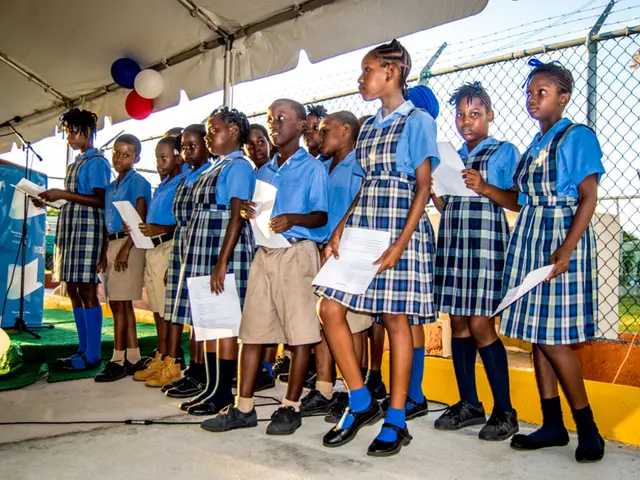Trump Proposes Integration of Artificial Intelligence in K-12 Education Through New Executive Order
AI in the Classroom: A New Draft Executive Order
Schools in the U.S. often struggle with affording basics like pencils and paper. But when it comes to AI, the educational scene is about to change, thanks to a new draft executive order. The White House shall prioritize AI in classrooms by diverting federal funds towards developing "AI literacy" skills among students and teachers.
Titled "Advancing Artificial Intelligence Education for American Youth," the order stresses the importance of AI, stating it's "revolutionizing industries, enhancing productivity, and reshaping how we live and work." It aims to equip the nation's youth with essential AI skills to maintain a global lead in the technological race.
The Trump administration might be responding to China's recent move to overhaul classrooms by incorporating AI applications into textbooks and curriculums. The competition between these two nations in the AI sphere may help protect each country's global influence.
The executive order proposes establishing a White House task force on AI education, with members from tech giants like Michael Kratsios from the Office of Science and Technology Policy and David Sacks, Trump's advisor on crypto and AI.
According to a draft from the Washington Post, the order instructs federal agencies to collaborate with industry, academia, and non-profit groups in teaching students "foundational AI literacy and critical thinking skills." The taskforce should identify existing federal funding, like grants, for AI programs, and prioritize spending on AI education.
It also urges Education Secretary Linda McMahon to prioritize federal grant funding for training teachers on AI-related tasks and to evaluate their performance. Improving educators' AI literacy will enable them to incorporate AI into all subjects.
It's ironic that "AI" and "critical thinking" are used in the same sentence, as they often contradict each other. A study by Microsoft and Carnegie Mellon University found that those who trusted the accuracy of AI assistants tended to think less critically about their conclusions. Some new programmers might even be accepting answers provided by AI bots, miss out on crucial learning opportunities, and struggle with debugging issues or formulating better solutions.
AI can be beneficial when used correctly, such as searching through vast amounts of data or translating old works into English. AI tutors that create personalized learning tracks for students have also been attempted. However, the question remains whether tech-illiterate schools will be able to implement AI effectively, especially when most people still don't fully understand its inner workings.
The disconnect is evident when Education Secretary McMahon recently mistakenly identified "artificial intelligence" as "A1," the steak sauce. As for ChatGPT o4-mini, rest assured it's here to help you navigate AI education and put your critical thinking skills to the test!
Insights:
- The executive order aims to embed AI literacy and skills at every level of K-12 education through training, partnerships, funding prioritization, and workforce readiness initiatives [2][3][5].
- The White House AI Education Task Force will oversee the planning and implementation of AI initiatives, including a "Presidential AI Challenge" [3][5].
- The order encourages partnerships between industry, philanthropic organizations, and academic institutions to develop AI resources and programs [3][5].
- The Secretary of Education is instructed to prioritize AI in grant programs for teacher training, and the Director of the National Science Foundation is directed to focus research on AI's role in education [5].
- Concerns about federal government capacity, funding limitations, and state-level resistance pose potential hurdles to achieving the objectives of the executive order fully [2][3][5].
- The new draft executive order, titled "Advancing Artificial Intelligence Education for American Youth," aims to embed AI literacy and skills at every level of K-12 education.
- The White House AI Education Task Force will oversee the planning and implementation of AI initiatives, such as a "Presidential AI Challenge."
- Partnerships between industry, philanthropic organizations, and academic institutions are encouraged to develop AI resources and programs as part of this executive order.
- The Secretary of Education is instructed to prioritize AI in grant programs for teacher training, while the Director of the National Science Foundation is directed to focus research on AI's role in education.








